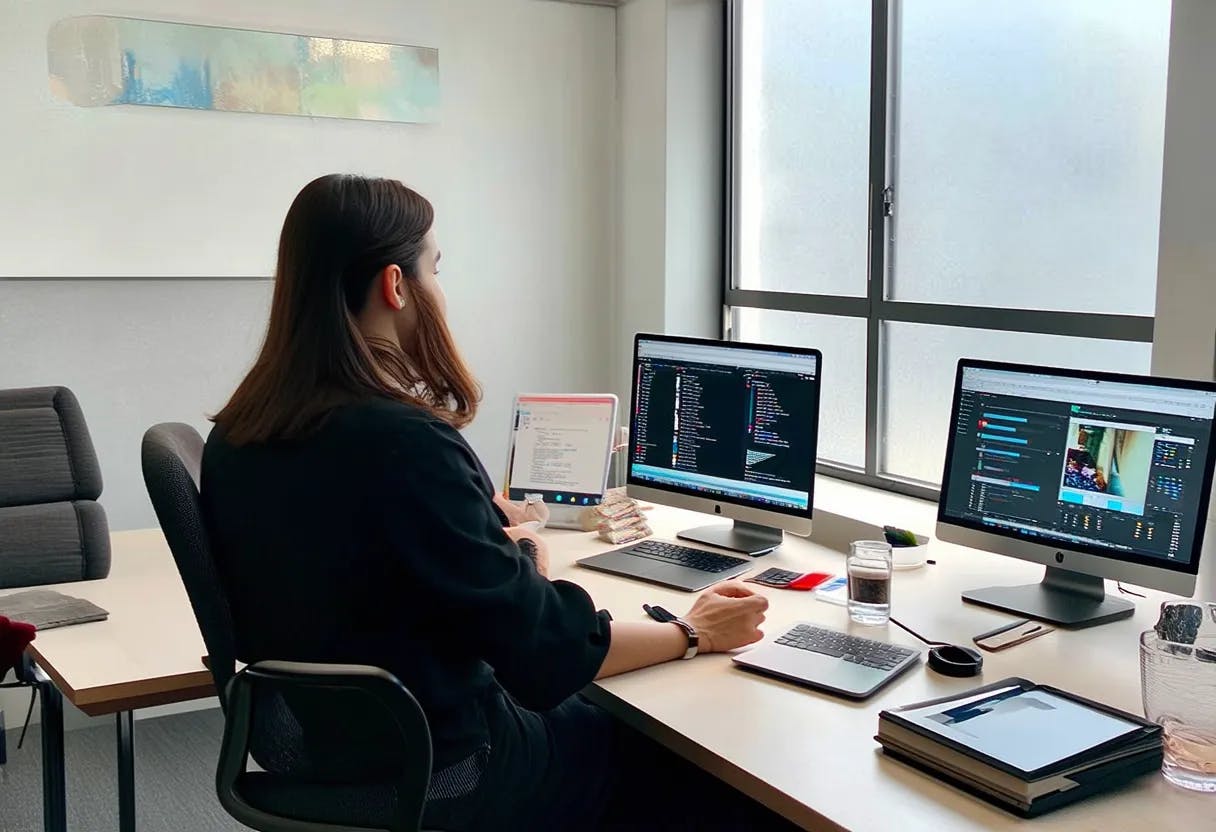Generative AI (GenAI) is quickly becoming our everyday teammate, helping out behind the scenes in ways we might not even realize. In 2023, a McKinsey survey revealed that one-third of organizations actively use it in at least one business area, such as sales or accounting. But the most significant potential for business lies in software development.
Costs of product development
Imagine you have a great idea. To create a product out of it, you need to analyze the market, find a product-market fit, and hire strong specialists, including developers, designers, etc. The more complex the project, the more time you need. On average, planning and architecture, along with development and design, can take up to 6-7 months, while testing requires another 2-4 weeks.
This process is not only time-consuming but also pricey. The exact cost depends heavily on the type of product and its niche.
Not every team can afford this level of spending. Given the current venture climate, it may be wise to explore as many cost-reducing strategies as possible. In this context, AI, especially Generative AI (GenAI), can be one of the most helpful tools. It is designed to generate new original content, from text to images, and even code, based on the patterns it learns from the data it is fed.
Below, I'll delve into how GenAI can assist you at different stages of product development.
Data analysis
Generative AI can gather and analyze first-party customer data collected through their ecosystem, as well as reviews and insights on market trends from focus groups, social listening campaigns, and more. With this information, AI can identify customer pain points and product requests, which is crucial for testing your idea and finding a market fit for a future product.
Among the AI models capable of this, Viable stands out due to its ability to aggregate and analyze feedback from various platforms, such as emails, chat logs, product reviews, and social media. Another example is Crayon, which leverages machine learning algorithms to analyze market trends and customer feedback, helping to identify customer needs.
Soft development
When it comes to product development, GenAI facilitates a range of tasks, from code generation to testing and even assisting in software design. Tools like GitHub Copilot, powered by OpenAI's Codex, assist developers by suggesting complete lines of code or entire functions based on the comments or partial code they write. For instance, in 2023, Shopify significantly
There are also tools like DeepCode and Amazon CodeGuru that review existing code and suggest improvements or identify vulnerabilities. They can spot complex patterns and offer fixes to improve both performance and security. In addition to debugging code, generative AI can pretest upcoming software updates, reducing potential errors. Companies like Diffblue are integrating AI into automatic test generation, which can analyze existing code bases to create unit tests automatically, ensuring that new updates do not break existing functionalities.
Design
Product development is not only about code; creating an appealing interface is crucial as well. Tools like Stable Diffusion and Midjourney can generate visuals based on instructions from human designers.
Many businesses leverage these tools to boost their productivity. For example, Airbnb utilizes AI to transform sketches into product code, drastically reducing the time from design to prototype. In the fashion and retail industry, Under Armour employs Adobe Sensei to enhance product images and quickly create engaging marketing content. Another major retailer, Home Depot, uses the Sensei AI model on their e-commerce platform to streamline search functions and adjust recommendations.
Sales and marketing
Once you have your product, generative AI can refine marketing strategies by performing A/B testing on elements like page layouts, SEO strategies, etc. It utilizes predictive analytics and data-driven insights to maximize investment returns.
GenAI also excels at personalizing the customer experience and optimizing sales.
Basic rules
Thanks to its broad capabilities, GenAI is sometimes seen as a universal solution to solve all issues, either to ride the wave of hype or to impress investors. However, just as microscopes are not designed to hammer nails, GenAI is not a one-size-fits-all tool. You have to test different products until you find those that fit your goals.
To maximize the benefits of this technology, it is also crucial to inspire people to use AI and dive deeper into its applications, or even hire someone with experience to lead a team and set an example. Given that this tool is still new, it might be beneficial to regularly meet to track progress, discuss blind spots, address issues, and find ways to improve collective work. Only by following these basic rules product development with AI may lead to success.

